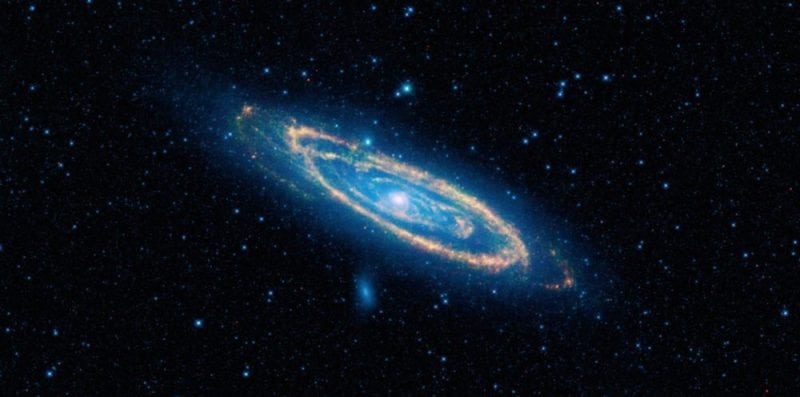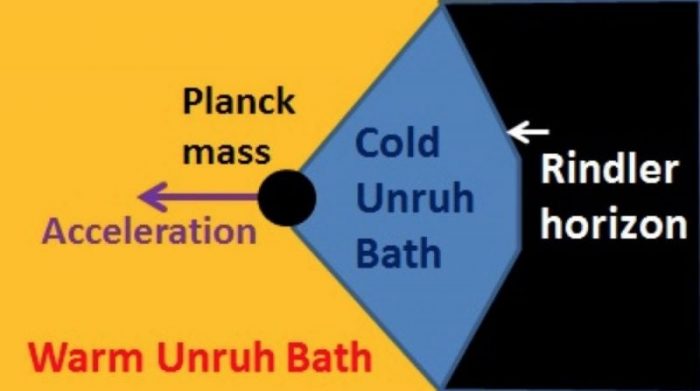
It is well-known that galaxies rotate so fast that centrifugal forces should have long ago beaten the gravitational self-attraction of all the visible mass we see, and torn them apart, but galaxies sit there apparently not being torn apart. This anomaly was first seen in galaxy clusters by Fritz Zwicky in 1933, and in the Milky Way by Rubin and Ford in the 1970s. Most astrophysicists have assumed that what keeps galaxies together is the gravity from vast invisible clouds of so-called dark matter and they have been looking for dark matter for many decades without success.
However, there is now good evidence that dark matter does not exist at all. For example, changes in the rotation speed as you go out from the galactic center are always associated with changes in the amount of visible matter at that radius, and nothing else, indicating that the dynamics are not controlled by any invisible matter. There is also a philosophical objection: arbitrary models like dark matter are insidious because they can be fudged to be right for the wrong reasons, and dark matter has to be adjusted arbitrarily for each galaxy separately, so it is not predictive.
In a paper recently published in Astrophysics and Space Science (McCulloch, 2017), it has been shown that the rotation speed at the edge of galaxies can be predicted by a theory called quantised inertia that has no arbitrariness at all. It correctly predicts the rotation of the 153 galaxies in a well-known dataset from only the visible mass, the speed of light and the cosmic diameter and combines relativity and quantum mechanics, two theories thought to be incompatible, in a beautiful new way.

Credit: Mike McCulloch
Quantised inertia works simply as follows (see the schematic). Imagine you accelerate an object (the black circle) to the left (the purple arrow). Relativity then says that information from some distance to the object’s right will never catch up with it, so from the object’s point of view space-time ends there (see the black area) and a Rindler horizon forms at that edge, like a black hole’s event horizon.
Now the same combination of relativity and quantum mechanics that gave us Hawking radiation, also predicts that this horizon will separate pairs of virtual particles and emit radiation. Therefore, the accelerated object will see a warm bath of so-called Unruh radiation (the orange area). The new contribution of quantised inertia is that the horizon ‘damps’ the Unruh radiation on its side of the object (see the blue area). An analogy is a ship docked next to a harbor wall. Waves will be dampened between the ship and the harbor wall (only a few wavelengths will fit) but waves will not be dampened on the seaward side, so there will be more waves pushing the ship from the seaward side, producing a net force towards the wall. Similarly, for our object there’s more Unruh radiation to its left, so the net effect is a rightwards force that opposes the acceleration. This models the well-known phenomenon of inertial mass (the Higgs mechanism only accounts for 0.1% of the inertial mass).
There is also a horizon at the cosmic edge where stars are moving away from us too fast to be seen. In quantised inertia, this cosmic horizon damps Unruh radiation all the way around the object (in front and back equally) and so it makes the inertial process described above less efficient. This is especially the case for low accelerations where the Unruh waves are long and feel that distant cosmic horizon. So quantised inertia predicts that low acceleration objects, like stars at the edge of galaxies, will lose inertial mass in a new way, and it turns out, as this paper shows, that this is exactly what is needed to reduce the centrifugal force on the stars to keep the galaxies bound as they are observed to be. The theory also makes a new and unique prediction since it depends upon the cosmic diameter: the cosmos was smaller in the distant past so the mechanism should have been even less effective back then, so the galaxy rotation problem should have been worse. It is shown in the paper that recent data on high-redshift galaxies indicates that this was the case.
The theory still needs more work: for example, a detailed model of the interaction between horizons and Unruh radiation is needed. The surprising thing is that by combining the estranged quantum mechanics and relativity in this simple way, quantised inertia predicts edge galaxy rotation, and other anomalies such as cosmic acceleration and the emdrive, without needing the invention of any new matter, and without any arbitrariness at all.
These findings are described in the article entitled Galaxy rotations from quantised inertia and visible matter only, published in the journal Astrophysics and Space Science. This work was led by Mike McCulloch from Plymouth University.









